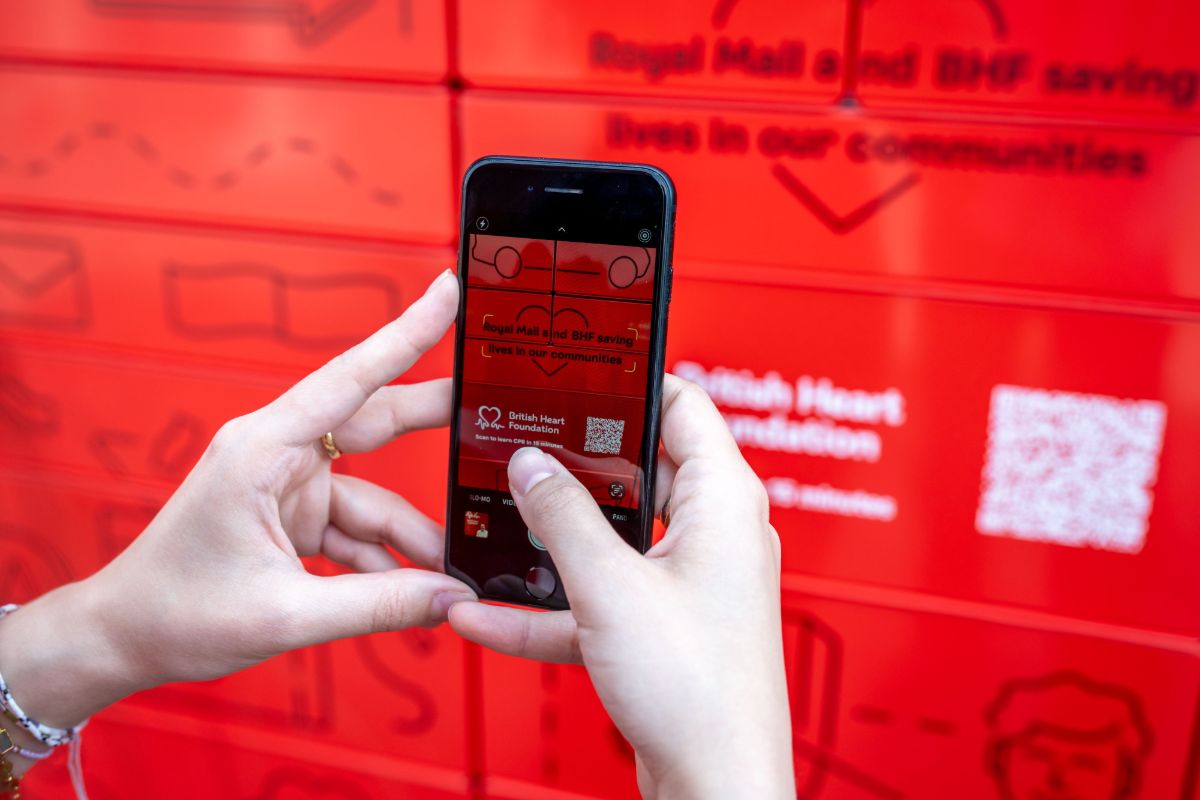Retailers are working hard to embrace CRO practises across their business but what exactly are they doing?
ShopDirect: Testing to the limit:
At ShopDirect the retailer refuses to use the acronym CRO or the term conversion rate optimisation calling its work in this area experimentation since the company feels that’s a better definition of what it is doing.
“Experimentation suited as we are experimenting on the website. We write a hypothesis – ‘if we make this change it will impact this’ — and we have a view on the outcome we would like it to be and then we test it,” says Sam Barton, head of user experience at ShopDirect.
The company is currently running around 50 tests a month. This will rise to 100 by June this year and to 140 by the same time next year. “We test everything,” says Barton. And he says the company isn’t afraid of failure since there are lessons to be learnt from everything. “A third of our experiments are successful, a third are inconsequential and a third fail,” he says. “We call it test and learn because whether we win, it’s insignificant or it fails we always look to learn from it – it’s a continuous cycle,” says Barton.
The retailer was one of the first to introduce its own in-house lab, which it built a year ago, and into which it brings customers to test the company’s site, observed by stakeholders and colleagues. To date more than 250 customers have passed through the testing lab and more than 1,000 colleagues have observed testing.
With such scale of tests maintaining momentum around a testing culture can be tough as less wins are identified so Barton’s focus is on maintaining the enthusiasm for experimentation. “It’s about how we manage that in terms of the scale and the platforms we use. Ultimately there are areas of customer friction everywhere on the site. In terms of finding those tests it is about looking at multiple challenges –for instance on a product page there may be 40 ways you can execute it so it’s about running that as a process of events,” says Barton.
And although the comparative scale of test wins may lessen the drive won’t, insists Barton. “We are seeing significant increases in conversion and sales – that maintains interest,” he says.
Experimentation is now embraced across the business and clear results are being seen. “We are seven months in to the financial year and are just short of meeting our commercial targets [for CRO] for the full financial year. That gives you an idea of how successful we are being,” says Barton.
Paperchase: Pinning CRO to the top of the agenda
At Paperchase multichannel director Joe Irons keeps an eye on conversion rate as a metric on a daily basis for both the website and stores. “It is a key measure of how easy we are making it for customers to shop our brand and find the products that they want,” he says.
The retailer re-platformed its website and chose a responsive design early in 2014 in order to improve the brand presentation and overall customer journey across all devices to ultimately improve conversion. “As part of that development we invested a lot of time in improving our product presentation, with better images and descriptions, adding customer reviews and more engaging content,” says Irons. The company also improved its delivery options and introduced click and collect to help further boost the likelihood of its customers actually purchasing.
“Ultimately our whole approach to conversion has been what can we do to make shopping with Paperchase as enjoyable and as easy as possible. We have all always done that very well in our stores – it’s about applying the same principles to our website,” says Irons.
He says the same store mentality as instore needs to be brought online – a key challenge for many bricks and mortar retailers. “As with most retail businesses we have a number of key KPIs that we focus on and one of those in our stores is conversion. We look at conversion as a good indicator of how we are satisfying customers through the experience we give,” says Irons.
And the equation is simple: “If the customers like the product, if they enjoy the store environment and they are given great service, typically they will buy from us. If we get any of those things wrong, our chances of converting the customer will be less,” he says.
Irons recognises that conversion rate optimisation is a continual process fuelled by ongoing testing and trialling but says the results speak for themselves. “Paperchase has seen significant conversion improvements on both mobile and desktop this year, as well as in our stores. We have an ongoing commitment to improving conversion rate across all channels and see it as key driver of both customer satisfaction and sales,” he says.
NotOnTheHighStreet.com: Dedicating more resources than ever
The past financial year has seen a transformation in conversion rate optimisation at online retailer NotOnThHighStreet.com. The retailer increased its investment in conversion rate optimisation and hired a dedicated member of staff whose task it is to own and manage optimisation within the business. The change that has allowed big changes in both how CRO is managed, testing done and the results gained from it have been huge according to NotOnTheHighStreet.com optimisation manager Ollie Scheers. “This has resulted in us moving from launching 9 MVT/AB tests in 2013/14 to being on track to deliver over 100 by the end of 2014/15. These tests have ranged from simple AB tests, algorithm and search improvements, complex MVTs, and personalised experiences,” he says.
The results have certainly been impressive with a staggering seven figure return on investment from this increased test volume, according to Scheers. “When we started the year we set an incremental sales target of £5,000,000 to be delivered from our optimisation activities. We are on our way to achieving that,” he says.
And whilst the 100 plus tests it will have completed by the year end won’t all have necessarily delivered a revenue benefit Scheers stresses that every test has been valuable. “They have all delivered insight which we can use to inform future tests and changes to our site,” says Scheers. “One of the other KPIs we measure is the percentage of our tests that result in a change to our site or how we do things within NotOnTheHighStreet.com. This ensures that we can measure the business impact of our optimisation activities beyond the incremental revenue it delivers,” he says.
For a retailer that faces the huge challenge of selling a very wide range of products from a scattered, wide supply base conversion rate optimisation is key.
Office: Making CRO smarter than ever
At shoe retailer Office multichannel director Robin Worthington says that the company goes through a continual process of test and learn using the bad as well as the good to help improve future performance of conversion throughout its business. The company uses Multi Variant Testing (MVT) almost continuously on its website to test multiple variations of certain key pages to see which combination of factors is most effective at improving conversion. “After the most effective combination is determined, we then build these changes into the site design,” says Worthington.
But he says customer journey analysis is also important. “We use a combination of approaches including funnel analysis via analytics, to see which pages and points have the highest drop off rates, but we also use the tool SessionCam which allows us to record customer journeys and play them back to work out where any customer pain points are,” he says. In addition the company follows that up with continuous research to understand how customers are using its online site making use of tools such as pop-up exit surveys, and post-purchase email surveys to help identify whether areas of the site are causing problems.
Worthington says Office ran a major usability project with PRWD last year, culminating in the redesign of its product pages and checkout process.
Other techniques Worthington says Office uses to optimise conversion include basket abandonment emails, PPC landing page optimisation, copy optimisation and targeted marketing via segmented email marketing.
However Worthington warns retailers that all this work means nothing if the retailing basics aren’t in place that will allow conversion to actually follow through. “Product availability and pricing are probably the two biggest influencers on conversion, so if those aren’t right, you’re wasting effort with complicated onsite optimising techniques. For an online retailer, having the right delivery proposition is also critical; although there are now so many great ways of getting products to customers, that this really shouldn’t be an issue,” he says.
The Entertainer: Understanding that play makes perfect
Toy retailer The Entertainer is at the earlier stages of a full conversion rate optimisation strategy but realises the value it brings nonetheless. Although the company broadly defines conversion as the ultimate conclusion of a sale the company’s online trading manager Rob Wood says that undermines a lot of the work the retailer is doing in this area. “There is the major conversion of someone buying something but there’s also the value of things like shares on Facebook which is part of our thinking around conversion. The challenge is how do we measure it? We need to add in a value for that number but we have no idea at the moment whether that is 3p or £3,” he says.
The retailer is currently introducing a new CRM system that will help to give it a single view of the customer as it looks to understand their true lifetime value and further aid conversion.
Like many of the retailers interviewed for this report The Entertainer launched a new responsive site last October, increasing its focus on conversion statistics across devices since then. “One of the challenges is that so many people interact on so many different devices that it can be hard to track what they are doing. It’s about how to link those devices together. Someone like Amazon is great at it but for a gift retailer like us where someone may only shop once or twice a year with us it’s harder to get that register where people are logged in and we recognise who they are,” says Wood.
The company also does a lot of visitor testing – particularly using resources such as usertesting.com where retailers can set tasks and see videos and recorded narrative of customers completing the set customer journey. “That’s really useful and relatively cheap,” says Wood.
The focus on CRO will ramp up in 2015 as the retailer broadens its CRO strategy further. “We learnt a lot last year about where we are on the journey but the big challenge this year and next will be measuring it – especially across different channels and different devices,” says Wood.
Majestic Wine: Sharing a glass with a group CRO approach
At Bensons for Beds the retailer is about to embark on a major CRO project with PRWD and is incorporating best practise in the area in doing so across everything such as traffic levels, current conversion rates, funnel analysis and onsite behaviour. “As a business we’re at the start of an optimisation journey with a view to develop our sites underpinned by a framework of continual optimisation,” says Bensons for Beds’ web conversion manager Kate Mitchell. The company has undertaken usability studies to provide an overarching view of key challenges users face when shopping on its site and more broadly in the furniture category and is now looking at developing a data driven approach to prioritise such changes effectively. “Naturally we’re interested in macro conversion – getting people who visit to buy, or buy multiple products in their order, but we’re also interested in the micro on-site conversions – usage of store finder, email subscription, blog engagement etc. Within all metrics we’re interested in customer type and behaviour to help inform conversion growth potential,” says Mitchell.
The company has a small team dedicated to conversion rate optimisation but the subject is also talked about across the business as a valuable growth opportunity. In the future Mitchell says segmentation will be key to boosting conversion further. “Moving forward we’ll begin to consider customer lifecycle more extensively, and get under the skin of segmenting our traffic to identify conversion opportunities both in terms of boosting conversion rate and average transactional value,” she says.
“2014 saw the start of a desire to have a more structured approach, data driven approach to CRO that incorporates a holistic view of the customer alongside site behaviour. This will be the driving force behind our approach to CRO in 2015,” says Mitchell.
Walls and Floors: Laying the ground for optimisation
At tiles retailer Walls and Floors conversion rate optimisation falls under the remit of web development manager Tom Murrell and it’s a subject he’s grown rather fond of. “I am responsible for CRO – it’s something that has almost become an addiction – albeit a healthy one!” he says.
And the addiction has paid off, with the online retailer achieving record conversion rates online during 2014 and with more of the same planned for this year.
However Murrell says it is something that needs nurturing within a business if it is to prosper. “Conversion rate optimisation is something that needs constant care, attention and drive and it’s something I share with my team almost daily and with directors weekly,” he says.
But as with the likes of ShopDirect Murrell says his company learns as much from tests that have failed as those that have worked. “You have to embrace it if you’re seeing a slight decrease or dip and endeavour to get to the bottom of it. No one likes to fail, but we’ve learnt so much from ultimately failing fast, and then moving on to the next test,” he says.
He believes that retailers should follow a continual process of testing to ensure a business never stands still. “Research, implement, test, monitor, analyse, learn, optimise and then iterate the entire process,” he says.
But whilst he believes in a process of continual testing Murrell also warns that retailers should keep in mind what others are doing and what their own company goals are too rather than getting carried away. “Look at industry leaders online, look at competitors and set out to better it. Keep your own audience in mind – that’s vital. Understand your customer’s journey and what makes them tick. Surveys and social signals help with that. Listen to feedback from your customers; negative reviews should provoke an action. Utilise all of your analytical tools and you’re on the right path to maximising conversion. You also need a good team behind you all full of ideas and looking to innovate,” he says.
Wauwaa: Delivering unusual challenges around CRO
For most retailers split testing is easy enough to do since they can test product, pricing, messaging etc all within the confines of their site and work out what best influences conversion for their business. For online baby goods retailer Wauwaa however the challenge is a little harder simply thanks to the market the company is in.
Although CRO is as important to the company as any other retailer that was interviewed as part of this report the brand does have rather unusual challenges simply thanks to the market it is in. “A lot of parents and parents to be are very forum hungry and share information so for us to do split testing in terms of messaging and pricing isn’t so easy because so much information is being shared outside of our channel,” says Brian Mak, chief marketing officer at Wauwaa.
This means that although the retailer can split test for things like checkout optimisation other changes have to be tested more discreetly via other channels such as email rather than online.
However such forums also offer a huge potential for learning for the brand that could boost conversion and Mak says the retailer listens closely with teams dedicated to doing so since it realises the benefit that can be gained. “A lot of it is reputation management and a lot of it is customer service but we do learn what people are interested in in terms of our offering and we learn how to target our messaging,” he says. The channel, he points out, also allows it to enable it to better target its messaging between the deal hunters who tend to come through to the site via such forums and those that arrive onsite via paid search – enabling the retailer to better boost conversion by targeting both specifically.
Joe Browns: Embarking on a new journey
At mail order and online fashion retailer Joe Browns CRO was on the backburner in 2014 following a major site relaunch last summer and subsequent additional releases as enhancements continued. However for 2015 CRO will be a key focus with the company about to start a new programme of CRO, according to Seb Villien, head of ecommerce for Joe Browns. “We have a list of things we would like to test. We keep adding to it after reviewing the competition, running usability sessions or just from customer feedback. From there we establish effort versus potential return and that gives us a priority list,” he says. The company has also identified some easy wins for this year too. “We are working on improving our photography as we realise having additional shots will definitely help conversion,” says Villien.
The company optimises each channel individually and looks at customer profitability over time in order to try to determine what customers it should look to be acquiring. Results of CRO are shared at a senior management level within the business at the company’s weekly trading meetings for review and discussion. “As a mail order business, we continuously analyse how to optimise the use of our database, that is who to mail and how often,” says Villien. “Then, because the vast majority of our orders are placed online, we also look at both the upper and lower funnel to maximise conversion. This can take the form of different homepage layouts, additional features on product pages or checkout flow.
And like all the retailers surveyed for this report the retailer has a very strong focus on mobile, “Mobile is very important for us. We are focusing on mobile usability in order to implement changes to our product pages, basket page and checkout mainly,” he says.
New Look: Looking at how to support its customers to convert
At fashion retailer New Look conversion is a prime target for the company and is something that is led from board level with all staff also encouraged to embrace their own responsibilities for conversion. “CRO is owned by everyone – and is a key KPI for myself, the digital director and our managing director,” says Sally Heath, head of ecommerce at New Look. Conversion is reported on within its Monday trade packs to ensure that everyone understands its impact.
It is also something that is analysed at every level in the business, across every channel and across the entire buying process. “Conversion is hugely important – we measure it at every part of the customer journey both in store and online including all marketing channels, product conversion, and all content pieces,” says Heath.
The company focusses on constant AB testing to see where it can improve process and business and has CRO as the key measure for business cases for new functionality – including for example its new mobile site and checkout redesign.
One of the strongest converters for New Look however comes from its decision to use live chat on its website in order to help customers and aid conversion. “We use reactive live chat on our contact us page and basket stage of our checkout to provide real time help to customers whenever they need it,” says Louise Moghaddam, senior group customer services manager at New Look. The solution, which is provided by click to chat, click to call and click to video provider iAdvize, is currently deployed in a service support way which helps to ensure a purchase sticks and the customer remains satisfied. However the retailer is also looking at how it can be used to support sales and conversion such as having the chat link on more pages, implementing reactive chat and behavioural triggers. Moghadddam says the functionality already works incredibly well for the retailers. “Chat is currently our most satisfied channel,” she says. “Our customers like the speed and simplicity of it and approximately 2,000 customers use it each week to chat with us about issues ranging from order and delivery queries to queries about products or policy.”





